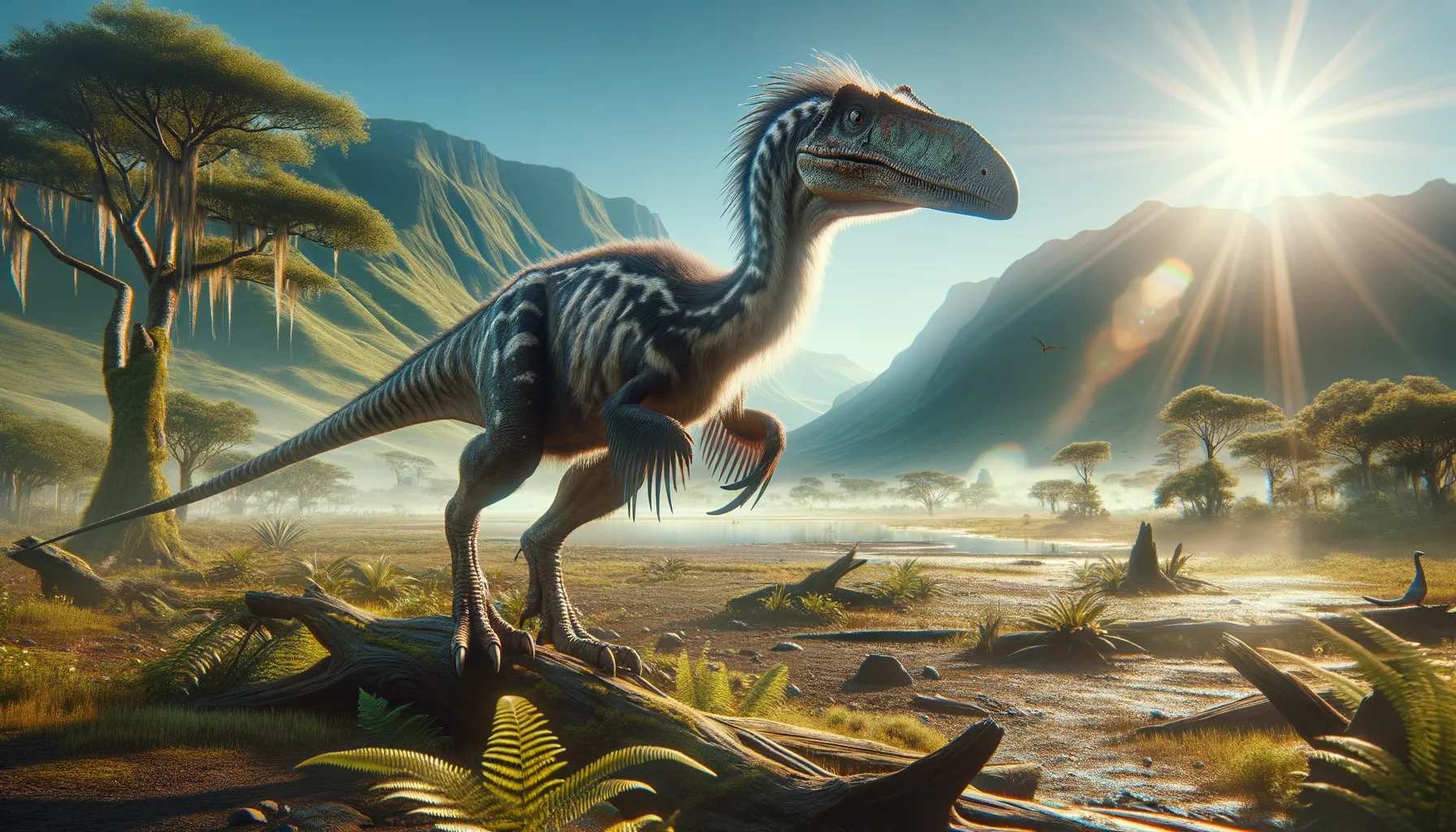
Chirostenotes
Swift predator with grace and agility!
Period
Cretaceous
Length
Measured about 2–3 meters (6.5–10 feet) long.
Height
Around 1.5 meters (5 feet) tall.
Weight
Approximately 45–90 kilograms (100–200 pounds).
Chirostenotes was a feathered dinosaur that lived during the Late Cretaceous period. It had long, slender limbs and was likely covered in feathers, providing evidence for the evolutionary transition between non-avian dinosaurs and birds. Its beak-like snout and sharp claws suggest it had a varied diet, possibly including small animals and plant matter. The discovery of Chirostenotes in North America has provided significant insights into the diverse ecosystems that existed during this era.
Diet
Chirostenotes likely had an omnivorous diet, consuming both plants and animals. Its beak-like snout was adapted for picking and tearing, suggesting it could feed on a variety of food sources.
Hunting
This dinosaur is believed to have used its speed and agility to catch small prey. The sharp claws on its hands suggest it could have been an effective hunter, capturing small vertebrates or scavenging as necessary.
Environmental challenges
Chirostenotes faced the challenge of finding food in a competitive prehistoric environment. Although equipped with agility, it had to avoid larger predators within its habitat. Fluctuating climate conditions during its time also played a significant role in its survival, influencing the availability of food and habitat resources.
Speed
Known for being relatively fast on its feet.
Lifespan
Estimated to live 10-20 years.
First discovery
Discovered in 1924 in Alberta, Canada.
Fun Facts
- Chirostenotes was a feathered dinosaur that lived around 75 million years ago during the Late Cretaceous period.
- Its name, Chirostenotes, means 'narrow-handed' due to its unique, slender claws.
- This dinosaur is thought to have been an omnivore, with a diet that included small animals, insects, and plants.
- Chirostenotes was about the size of an ostrich, standing around two meters tall and weighing between 50 and 100 kilograms.
- It was discovered in Alberta, Canada, highlighting the diverse dinosaur species that once inhabited North America.
- Chirostenotes had a beak-like mouth, which it might have used to crack open shells or cut through tough plant material.
- While it walked on two legs, Chirostenotes had strong arms that may have been helpful in hunting or climbing.
Growth and Development
As it grew, Chirostenotes developed strong limbs and sharp claws, useful for feeding and defense. It likely followed a rapid growth phase in its early years, typical of many dinosaurs, to quickly reach a size that would reduce predation risks.
Habitat
Chirostenotes occupied regions that were warm and seasonally wet. These environments likely consisted of lush forests and open plains, providing a rich resource base. Proximity to water sources would have been essential for its survival, ensuring access to both food and hydration.
Interaction with other species
Chirostenotes coexisted with a variety of other dinosaur species, likely competing for food and territory. It might have occasionally interacted with herbivores over shared plant resources. Its presence could also have attracted predators, leading to avoidance behaviors.
Natural lifespan
Chirostenotes had an estimated natural lifespan of 10-20 years.
Reproduction
Chirostenotes likely laid eggs in nests and may have exhibited parental care, similar to some modern birds. The reproductive behavior would have included courtship displays, potentially using its feathers.
Social behaviour
It may have lived in small groups, based on evidence from similar dinosaurs. Group living would have provided protection and assistance in hunting and foraging. Communication through vocalizations or visual displays could have been a part of its social interactions.
Fossil locations
Fossils of Chirostenotes have been primarily found in Alberta, Canada. These discoveries have provided valuable information about North American dinosaur fauna. Additional remains have allowed paleontologists to piece together its anatomy and lifestyle.
